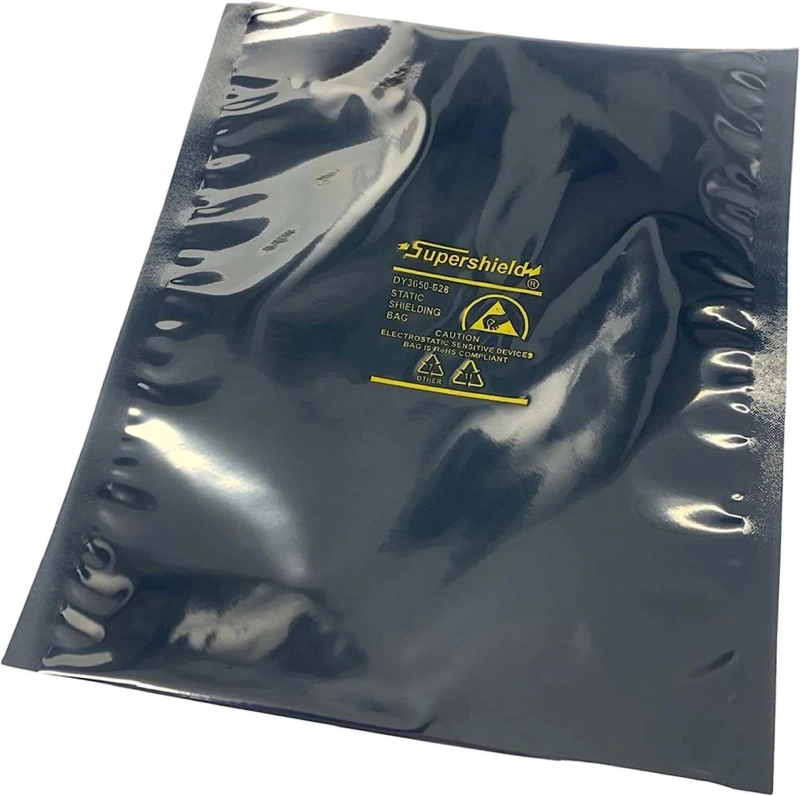In today's increasingly digital world, the need to protect sensitive electronic components from electrostatic discharge (ESD) is paramount. Static electricity can wreak havoc on delicate electronics, causing irreparable damage. To safeguard these components during handling, transportation, and storage, one essential tool in an electronics professional's arsenal is the static shielding bag. In this comprehensive guide, we will delve into the intricacies of choosing the right static shielding bag for effective ESD protection.
Understanding Electrostatic Discharge (ESD)
Before we dive into selecting the ideal static shielding bag, it's crucial to comprehend the nature of ESD and its potential consequences. ESD occurs when two objects with different electrical potentials come into contact or close proximity, resulting in a sudden flow of electricity. Even a small discharge can damage or degrade sensitive electronic components, leading to malfunctions or complete failure.
The Importance of ESD Protection
ESD damage is a silent but significant threat to electronics. To underscore its importance, consider this: ESD events are responsible for millions of dollars in electronic component failures each year. Thus, the right static shielding bag serves as the first line of defense against this costly hazard.
Types of Static Shielding Bags
Now, let's explore the various types of static shielding bags available in the market. Understanding their differences is essential for making an informed choice.
1. Metalized Shielding Bags
Metalized shielding bags, also known as metal-in shielding bags, are constructed with a layer of metal on the interior. This metal layer creates a Faraday cage effect, redirecting electrostatic charges around the bag's contents and keeping them safely inside.
2. Static Dissipative Shielding Bags
Static dissipative shielding bags are made from materials that allow for the controlled dissipation of electrostatic charges. These bags are ideal when you need both ESD protection and the ability to handle sensitive components without generating excessive charges.
3. Moisture Barrier Bags
Moisture barrier bags, in addition to ESD protection, offer a barrier against moisture and humidity. These bags are especially useful when ESD protection and moisture control are both critical for the components' integrity.
4. Bubble Cushioned Shielding Bags
Bubble-cushioned shielding bags combine the benefits of static shielding with protective cushioning. These are suitable for delicate components that require both ESD protection and physical safeguarding during transportation.
Factors to Consider When Choosing a Static Shielding Bag
Selecting the right static shielding bag involves considering several crucial factors.
1. ESD Sensitivity of Components
Assess the level of sensitivity of the electronic components you are handling. High-value components may require more robust protection, such as metalized shielding bags.
2. Bag Size and Dimensions
Ensure the static shielding bag can comfortably accommodate the components without overcrowding. An appropriately sized bag prevents physical damage during handling.
3. Sealability
A good static shielding bag should have a reliable seal to prevent the entry of moisture and electrostatic charges.
4. Transparency
In situations where visual inspection is necessary, opt for transparent static shielding bags to allow easy component identification without opening the bag.
5. Environmental Considerations
Consider the environment in which the components will be stored or transported. Moisture barrier bags are essential in high-humidity conditions.
6. Compliance with Industry Standards
Ensure that the chosen static shielding bag complies with relevant industry standards, such as ANSI/ESD S541 or MIL-PRF-81705.
Conclusion
Choosing the right static shielding bag for ESD protection is a critical decision that can significantly impact the longevity and functionality of your electronic components. By understanding the different types of bags and considering factors like ESD sensitivity, size, sealability, transparency, environment, and compliance, you can make an informed choice that safeguards your valuable electronics.
FAQs
1. Do I need a static shielding bag for all electronic components?
No, you should assess the ESD sensitivity of your components. Higher sensitivity components benefit the most from static shielding bags.
2. Can I reuse static shielding bags?
Some static shielding bags are designed for reuse, but always follow the manufacturer's guidelines and inspect them for damage before reuse.
3. What is the difference between metalized and static dissipative shielding bags?
Metalized bags create a Faraday cage effect, while static dissipative bags allow controlled dissipation of electrostatic charges.
4. Are bubble-cushioned shielding bags suitable for long-distance shipping?
Yes, bubble-cushioned shielding bags provide both ESD protection and physical cushioning, making them ideal for long-distance shipping.
5. Can I use a regular plastic bag for ESD protection?
No, regular plastic bags do not provide sufficient ESD protection. It's essential to use specialized static shielding bags for this purpose.


